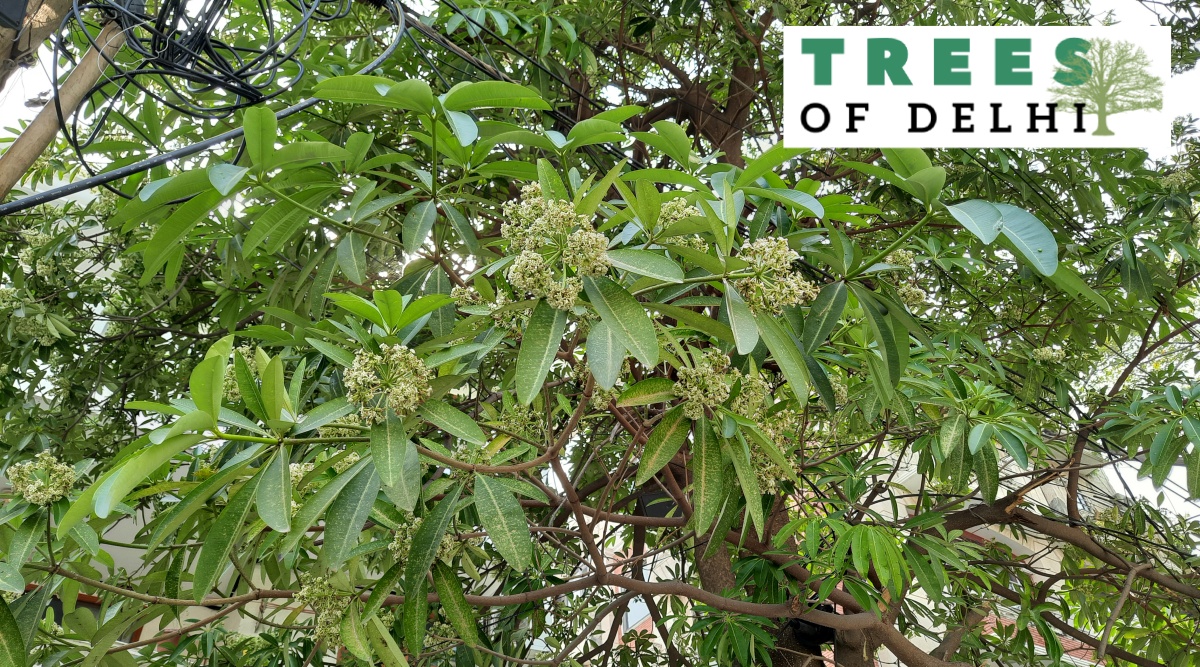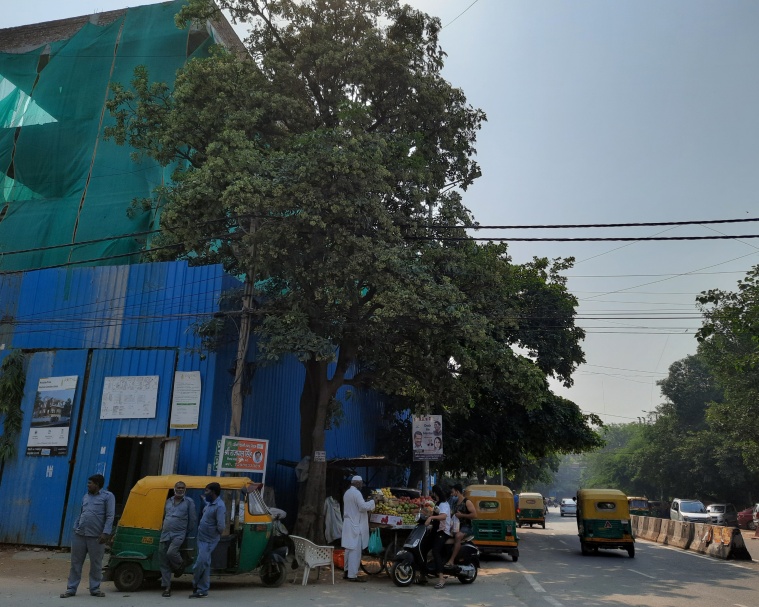Almost every lane in the city has its own Saptaparni tree, and almost everyone feels differently about it. While for some, the fragrance is a harbinger of the festive season, others are taken back to childhood memories. For many others, the distinct smell brings with it bouts of allergic reactions and nausea.
Entire streets are swathed in the unmistakable smell of its flowers in the evening, and vehicles parked beneath the trees are peppered with the tiny, white blooms that have become associated with these days of the year when the rains have subsided and a slight nip in the air heralds the coming of winter. The flowers are scattered over the fruits on a fruit seller’s cart that is parked beneath a Saptaparni tree in the east of Kailash, and they carpet the ground around it. Whiffs of the smell can be caught from cars and auto rickshaws, even a little distance away from the tree itself.
Almost every lane in the city has its own Saptaparni tree, and almost everyone feels differently about it. While for some, the fragrance is a harbinger of the festive season, others are taken back to childhood memories. For many others, the distinct smell brings with it bouts of allergic reactions and nausea.
Some Saptaparni trees are stealthily tucked into smaller lanes and others line the city’s main roads. The tree was first planted in the 1940s in Golf Links and it is now a popular avenue tree.
Its leaves, which radiate from a common centre, are just as hard to miss. Dr Faiyaz Khudsar, the in-charge of the Yamuna Biodiversity Park, said that the leaves are ‘palmately compound’, which means they are symmetrically arranged around a common point. The name, ‘saptaparni’, comes from Sanskrit words – ‘sapta’ meaning seven, and ‘parni’, which means leaves. They generally have seven compound leaves but could have anywhere between four to eight leaves.

He added, “For many, it’s a beautiful smell while for many others, pollen in the air is a hazard.” He himself recalled a time this season when the smell was so strong that he could smell it while he was inside his car, with a mask on.
The tree’s scientific name is Alstonia Scholaris and it is also popularly known as the Devil’s Tree or the blackboard tree. The bark was used to make blackboards and slates at one point. Traditionally, its leaves have been awarded to students graduating from Visva Bharati in Shantiniketan, and hence is commonly known as the ‘scholar tree’ or the ‘blackboard tree’.
According to Pradip Krishen, in his book ‘Trees of Delhi’, the old and large Saptaparni trees can be found in Delhi Golf Course. Tall trees can be found near the Sheesh Gumbad in Lodhi Garden and outside the IIC lounge.
The tree is an evergreen tree from the forests in submontane Himalayas. It can also be found in peninsular India, the Eastern and Western Ghats.
Source: Read Full Article



